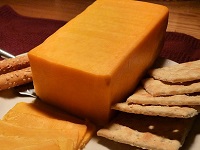Tinta de Toro (Spain)
Tinta de Toro is one of many synonyms for Tempranillo.
Tinta de Toro is the name used in the region of Toro in central Spain.
Tinta de Toro Flavors
Aromas of ripe Red and Black fruits is Tinta de Toro's hallmark, with hints of Dried Fig, Herbs, Licorice, Anise, and Minerals.
Young Tinta de Toro offers flavours of Cherry, Blackberry, Plum, and Tomato.
Red Cherry |
Black Cherry |
Tomato |
Blackberry |
Plum |
Fig |
Herbs |
Licorice |
Flavors from Maturation and Aging
Oak aging imparts sweet vanilla, coconut and spicy notes such as cloves and cinnamon.
Vanilla |
Coconut |
Cloves |
Cinnamon |
Tinta de Toro Profile
Medium acidity and moderate tannins make Tinta de Toro wines tasty, easy to like and easy to pair with many types of food. The balance of fruit, spice, and earthy flavors makes Tempranillo a favorite for many.
| SUGAR: | Dry (3 g/l) |
| BODY: | Medium |
| TANNINS: | Medium |
| FRUIT: | Medium |
| ACIDITY: | Medium |
| ALCOHOL: | 13-14 % ABV |
| Serving Temperature: 15-16°C (59-61°F) Reserva 16-18°C (61-64°F) | |
Tinta de Toro Food Pairing
Tinta de Toro is perfect with Lamb and Pork. It is also perfect with Filet Mignon, but lacks the tannins for a fat Beef.
Young Tinta de Toro pairs well with both Spicy and Tomato based dishes.
Tapas |
Ham |
Chorizo |
Chili |
Pasta |
Pizza |
Lasagna |
Hamburger |
Chicken |
Rabbit |
Pork |
Lamb |
Excellent Pairings
Tapas. Olives. Cold Cuts. Chorizo.
Pizza. Spaghetti. Lasagna.
Casseroles. Tomato Based Meatballs.
Savory Stews. Moroccan Tagine.
Roasted Meat. Lamb. Pork. Poultry.
Red Pepper Dishes.
Tacos. Nachos. Burritos.
Spanish Specialities
Paella.
Chili con Carne.
If You Like Tinta de Toro
You Might Also Like:
The Ideal Glass for Tinta de Toro
The Bordeaux Glass was designed for enjoying fuller-bodied, tannic red wines.

|
They are taller than other red wine glasses, and has a slimmer bowl.
The slimmer bowl directs the wine to the back of your mouth for a maximum taste. The size also allows the bouquet of the wine to develop, smooth out rough edges, play down tannins, and allow the wine to achieve balance. |
Tinta de Toro Cheese Pairing
About Tinta de Toro
Tinta de Toro was the wine chosen for Christopher Columbus' trip to America.
In fact, one of the ships was named "La Pinta" because it was loaded with this red wine.
About Tempranillo

Tempranillo is the noble grape variety of Spain, just like Cabernet Sauvignon is to France.
It is the most planted red wine grape in Spain and the third most planted in the world.
Tempranillo is high quality red wine grape that is grown all over Spain except in the hot South.
In Spain, Tempranillo thrives best in the cooler wine regions of Rioja and Ribera del Duero.
It is known as Tinto Fino in Ribera del Duero, Cencibel in La Mancha Valdepenas and Ull de Llebre (Eye of the Hare) in Catalonia, and "Aragonez" or "Tinta Roriz" in Portugal (used in Port wine). Its spiritual home is in Rioja and Navarra where it constitutes around 70% of most red blends.
The name comes from Spanish temprano which means early" and refers to early ripening.
Young Tempranillo wine has medium color, moderate acidity, and a fine berry-like character, while aged Tempranillo often develops a sweet spicy, leather and tobacco-like flavor.
Tempranillo wines are generally softer and rounder than Bordeaux wines, but drier than Burgundy wines.
Medium acidity and moderate tannins make Tempranillo wines round and soft, with a spicy aftertaste. The wines are easy to like, and easy to pair with many types of food.
Cherries and Red and Black Berries are typical Tempranillo flavors, with hints of Herbs, Licorice, Spices, and Minerals.
Terroir
Tempranillo loves calcareous clay soils but performs well also in limestone, chalck and iron rich ones. It performs best in "La Rioja" and "Ribeira del Duero" in Spain.
Spanish Tempranillo DO Regions
Rioja was the first Spanish region to be awarded DOCa status (1991).
Rioja wines are normally a blend of various grapes. A typical blend consists of 65% to 85% Tempranillo and up to 20% Garnacha.
| Rioja Joven Less than one year in Oak. |
60-80% Tempranillo 20% Garnacha |
| Rioja Crianza DOCa Min 24 months aging. One year in Oak. |
60-80% Tempranillo 20% Garnacha |
| Rioja Reserva DOCa Min 36 months aging. One year in Oak. |
60-80% Tempranillo 20% Garnacha |
| Rioja Grand Reserva DOCa Min 60 months aging. Two years in Oak. |
60-80% Tempranillo 20% Garnacha |
| Ribera del Duero DO | 90-100% Tempranillo |
| Toro DO | 90-100% Tinta de Toro |
DO Toro (1987)

Toro DO is named after the city of Toro (bull). It is located in the dry Castilla y Leon region.
Due to high temperatures, abdundant sunshine and low rainfall the area produces strong, high-alcohol wines.
Toro is well-known for its powerful, full bodied red wines made from Tinta da Toro.
Irrigation is needed from the Duero River that flows through the area.
Tinta de Toro (Tempranillo) is the dominant grape.
Some Garnacha is grown for use in Toro Rosado.
Some Malvasia Blanca and Verdejo for use in Toro Blanco.
Black Grapes | White Grapes |

95% Tinta del Toro |

|
Soil

The soil is formed by sediments of sand, clays and lime-bearing puddingstone, which produce a dark lime-bearing topsoil, with fine and coarse sands.
Vineyard area: 5 600 hectares.
Climate

Extreme Continental Climate
Long, hot summers, cold winters.
Low Rainfall (350 mm/year).
Abdundant Sunshine (2.600 h/year).
Irrigation is needed from the Duero River.
Altitudes: 650-825 m.
Strong temperature variations.
–11 to +40°C (12-104°F)









